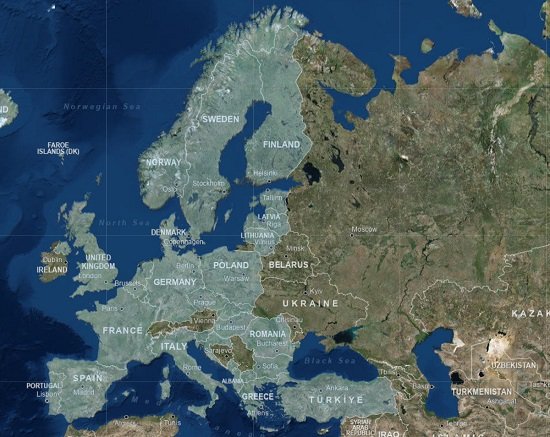There are six NATO countries (Norway, Poland, Finland, Latvia, Estonia, and Lithuania) are planning to build a ‘coordinated drone defence system’ to increase the security around the countries and tensions along their borders with Russia. The aim of the project ‘Drone Wall’, iis to make the countries borders safer from possible threats like military provocations and drug trafficking from the enemy or big countries.
Context and Background
The idea for the drone wall came out during ongoing wars all around the world, like the one in Ukraine, it claims that Russia was using “hybrid warfare” tactics on Ukraine. Hybrid warfare means to use both the traditional military force and non-military tactics, like cyber-attacks and spreading false news or information. The need for this defence system has been made clear when the repeated cases of GPS jamming, sabotage, and other unfriendly actions are seen in the warfare and so the NATO group believes that Russian attempts to make neighbouring countries less stable.
Drone Wall Implementation
All NATO countries that border Russia will be participant for this ‘drone wall system’, which will go from Norway to Poland. Lithuanian Interior Minister Agne Bilotaite brought up the plan after talking with her peers. To keep the borders safe from the enemy countrie’s drones, it is the requirement of the system that stop the drones.
Technological and Strategic Significance
Strategic use of drones and counter-drone systems is important to secure the border of the countries from possible attackers. Estonia’s Interior Minister ‘Lauri Laanemets’ talked about how the wars are being fought using the drone technology in this world, which was especially clear in the conflict in Ukraine. Drone technologies are meant to improve defence system, to protect sovereignty as well as to protect non-traditional forms of fighting.
NATO Support and Initiatives
This project fits in with NATO’s larger strategy to make the NATO countries air and missile defences stronger. Recently, Poland joined the ‘European Sky Shield Initiative’. The goal of the project is to build an integrated air defence system to tackle the situation of drone firing in the warfare, and to build the system like Israel’s Iron Dome. This shows that the NATO union is quite serious about protecting its territories from drones and missiles.
NATO-Russia Border Defense
Military Investments and Enhancements: Several NATO member countries have spent a lot of money to allow their militaries to make their border defence system stronger against Russia or any enemy country. Since Russia took over Crimea in 2014, Poland has significantly raised the amount and spent on defence. In 2004, Latvia, Estonia, and Lithuania joined NATO, making the eastern border of the alliance stronger.
Strategic Initiatives and Deployments: In 2017, a very important part of Poland and the Baltic states defence is NATO’s Enhanced Forward Presence. In the Norway, Arctic, and Russia share a 198 km of border. This is an area used by NATO countries for military drills. NATO sees the 60 km long Suwalki Gap as a vital corridor between Poland and Lithuania.
Regional Security Dynamics: The security in the Baltic states has improved a lot since Latvia, Estonia, and Lithuania joined NATO. Poland’s growing military spending shows how the importance of NATO’s eastern defence policy. The line between Russia & Norway in the Arctic is still the centre of NATO’s military drills and security efforts.




